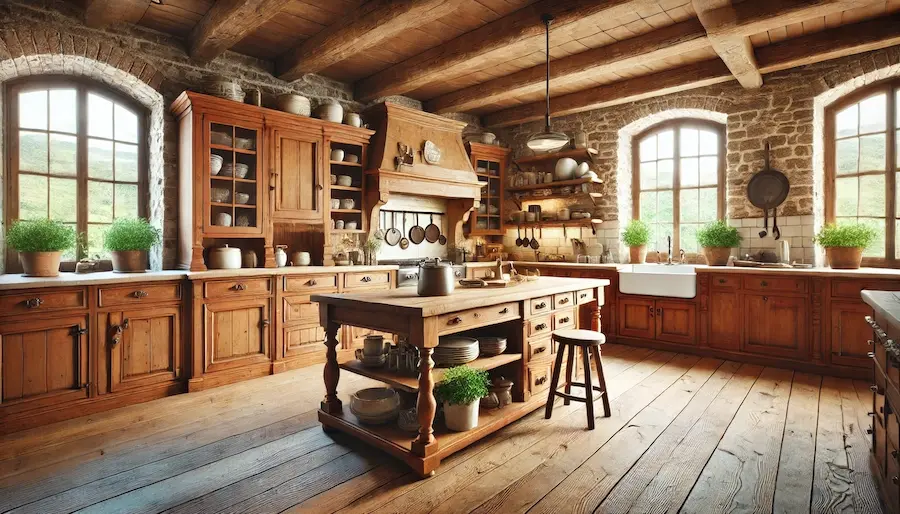A rustic kitchen design emphasizes natural materials, earthy tones, and a warm, inviting atmosphere, reflecting a connection to simpler times and the beauty of the outdoors. This article explores the history, key features, applications, and considerations for creating a rustic kitchen.
History and Origins of Rustic Kitchens
The rustic interior design style evolved during the 19th century in the United States, as settlers in the countryside utilized available resources to create functional yet charming interiors. They incorporated elements like hand-hewn beams, wide-plank wooden floors, and stone fireplaces in their homes. In the mid-20th century, the “Rustic Modern” style emerged, blending traditional rustic elements with a more organized and contemporary aesthetic, becoming popular in mountain cabins and lodges.
Key Features of Rustic Kitchens
- Natural Materials: Utilizing materials like weathered wood, rough-hewn stone, and exposed brick to create a connection with nature.
- Earthy Color Palette: Incorporating deep browns, warm reds, terracotta, and forest greens to evoke the natural environment.
- Handcrafted Elements: Featuring handmade furniture, cabinetry, and decor that showcase craftsmanship and add character to the space.
- Textural Variety: Combining soft textures like wool and linen with rough surfaces such as exposed beams and stone walls to add depth and warmth.
- Vintage-Inspired Fixtures: Incorporating elements like apron-front sinks, wrought iron hardware, and rustic lighting to enhance the nostalgic appeal.
Applications of Rustic Kitchens
- Residential Homes: Ideal for creating a warm and inviting atmosphere in family homes, particularly in rural or suburban settings.
- Cabins and Lodges: Perfect for vacation homes that aim to provide a cozy retreat connected to nature.
- Farmhouse-Style Interiors: Complements the farmhouse aesthetic, emphasizing simplicity and functionality.
Considerations When Designing a Rustic Kitchen
- Material Selection: Choose sustainable, high-quality natural materials that age well and enhance the rustic charm.
- Layout and Functionality: Ensure the kitchen layout is practical, with ample storage and workspace to accommodate daily activities.
- Lighting: Incorporate a mix of ambient and task lighting to highlight the natural textures and create a warm ambiance.
- Personal Touches: Add personal elements like family heirlooms, handcrafted decor, or vintage finds to make the space uniquely yours.
Conclusion
Rustic kitchen design offers a timeless appeal that brings warmth and natural beauty into the home. By focusing on natural materials, earthy colors, and handcrafted elements, you can create a kitchen that is both functional and inviting, reflecting the charm of rustic living.
